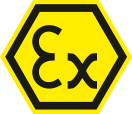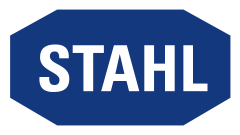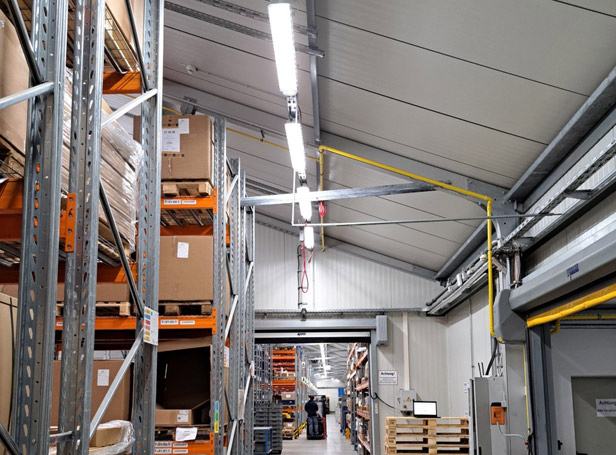A paradigm shift is currently taking place in the world of process automation. Where remote I/O systems previously functioned as silent data messengers, modern systems nowadays also perform basic control and preprocessing functions – directly on site, in hazardous areas, precisely where the need for them arises. This opens up new degrees of freedom for planners, machine builders and users.
Field device data used to be like gold bars in a vault – valuable, but difficult to access. Proprietary control systems controlled access and, although they offered analysis tools, these could generally only be used in special tools from providers. If you wanted to use data flexibly or link it with other tools, you had to find your own way around this. The Namur Open Architecture (NOA) developed by the Namur user association is now aiming to change this: An open interface makes it possible to use data from the field of the existing core automation for monitoring and optimisation applications.
This objective can be met through the technical progress being made in process automation: With the launch of the IS1+ Remote I/O generation by R. STAHL back in 2017, it was already apparent that the new platform is so powerful that its potential is being wasted when used for I/O operation alone. Instead of simply moving data from A to B, the question then was: Why not add a bit more intelligence and data preprocessing into the mix?
The requirements from practice guided the direction: Machine builders, integrators and users are looking for solutions to integrate modular machine units – known as skid units – into existing systems in a simple and standardised way. Until now there was no flexible, secure and cost-efficient control unit, especially in hazardous areas.
Conventional PLC solutions are not usually approved for Zone 1, have few or no cards with intrinsically safe I/O, or the integration solution is too expensive – or all of the above. The topic of MTPs (Module Type Packages) – in other words the plug-and-play integration of entire machine modules – soon reaches its limits in reality when it comes to applications in hazardous areas and intrinsically safe signal transmission.
And that's not all – new automation concepts like NOA or Open Process Automation (OPA) are bringing new momentum to development. Both of these use a new communication channel via which process, diagnostics and status data can be processed regardless of the control system. And the I/O level offers the ideal foundation for precisely this – as long as it's open, modular and smart enough. This is how R. STAHL developed not merely a new product – but a new platform: EXtended I/O.
EXtended I/O – far more than a remote I/O
Integrating a control runtime like CODESYS® turns the IS1+ Remote I/O into a local control unit for simple data preprocessing. CODESYS is a universal development environment which can be used to program control systems in a standardised and flexible manner regardless of manufacturer. Whether conventional machine logic, visualisations or modular control concepts – CODESYS offers everything in one package. It is based on international standard IEC 61131-3 and is supported by more than 400 device manufacturers around the world. This is why CODESYS is a trusted resource for many engineers – and for IS1+ EXtended I/O it's the perfect tool for efficiently bringing local intelligence to the field.
But CODESYS isn't the only way to bring intelligence to EXtended I/O. The UAO Shared Runtime Execution Engine from UniversalAutomation.org offers a pioneering alternative. Based on IEC standard 61499, the UAO Runtime responds to events – quickly, modularly and using minimal resources. Every part of the application, known as function blocks, can be distributed throughout any hardware – even during operation. In this way, control functions can be dynamically moved, linked and scaled.
R. STAHL was one of the first hardware manufacturers to adopt this open, jointly developed approach and is a founding member of UniversalAutomation.org, established in November 2021. This makes IS1+ EXtended I/O a modular control centre that not only can be integrated into existing control systems but also into completely new, software-centred architectures – like those created by the OPAF (Open Process Automation Forum).
And if you want to focus more on integration into modern engineering and visualisation systems – for instance in pharmaceutical environments or batch systems – there is another option: The Straton Runtime. Straton is a soft PLC which is also compliant with IEC 61131-3, developed by Straton Automation, a subsidiary of COPA-DATA, the developer of the zenon SCADA system. Straton really comes into its own where modularisation is required with a high visualisation level – for instance when implementing MTPs (Module Type Packages). The integrated MTP generator makes it possible to create standardised, reusable modules directly from the engineering environment, which can be seamlessly integrated into a higher-level control system (POL).
MTP: Using machine modules as if they were USB sticks
The fact that the Module Type Package (MTP) is supported at all is a real highlight. This allows machine modules, known as Process Equipment Assemblies (PEA), to be treated as if they were software plugins: Insert, connect and you're done. When the CODESYS Runtime is used, IS1+ functions as a control unit for a PEA. Using the PA Toolkit developed and sold by FESTO makes it possible to generate an MTP directly from the CODESYS project and link IS1+ to the Process Orchestration Layer (POL). With the UAO Runtime, UniversalAutomation.org also offers MTP integration – which likewise can be run on the EXtended I/O platform.
The standout feature of these solutions is that programming remains within a known environment. The visualisation is integrated. And this integration into control systems, the POL, takes place as standard – without the need for special solutions. And this even applies to installation in hazardous areas up to Zone 1. This reduces project costs, simplifies commissioning and creates a future in which machine modules are truly exchangeable and flexible. For users, this means a complete solution, from the PLC logic to the MTP file, from the same provider – ideal for machine builders who want to get their skid units ready for the future without becoming stuck with proprietary isolated solutions.
Open systems for an interconnected future
Alongside the aforementioned runtimes, there is also an option for users who would like to use their own control logic or special software on the EXtended I/O platform: The Open Systems Runtime. This is a kind of open operating system window to the hardware – prepared for OEM partners, system integrators or control system manufacturers who want to integrate their own runtime or individual applications directly into the I/O system. This is particularly promising in the context of the OPAF (Open Process Automation Forum), which aims to completely separate hardware from software. Various manufacturers and system integrators are already using their own runtime environments directly on R. STAHL's EXtended I/O platform. The first large-scale field trial is currently taking place in the USA. The EXtended I/O can accordingly function as a Distributed Control Node (DCN) with integrated I/O.
With IS1+ EXtended I/O, it's possible to make savings on space, costs and laborious approvals for hazardous areas on a daily basis through the use of control runtimes. At the same time, it offers a system which not only switches but also thinks for itself – within the limits of its tasks, of course. It can't fly a helicopter yet, but EXtended I/O is ideal for skids, pumping stations and metering systems in hazardous areas.
EXtended I/O operates as an open platform rather than a closed blackbox – which is probably the most important aspect. By simply replacing the CPU assembly, a conventional IS1+ Remote I/O system can be turned into an EXtended I/O – without conversion or recabling. This isn't just technically intelligent, but also offers economic benefits.
The data pyramid is being turned on its head – but EXtended I/O is keeping it stable
Automation was traditionally thought of as a pyramid, with the sensors at the bottom, the control system at the top and many layers in between. But this structure is crumbling. Nowadays data flows in many directions – to the cloud, to asset management systems, to AI applications, to mobile devices. The pyramid is at the point of being turned on its head.
IS1+ EXtended I/O is ready for this new way of thinking. It collects data, processes it locally and shares it – in a standardised, structured and real-time process. And it does all this without being tied to a specific manufacturer. Anyone who speaks the language of OPC UA is welcome. Anyone who understands MTP can get started right away. This means that EXtended I/O is a hub of intelligent process data, which is seamlessly inserted into modern architectures – with the ability to be installed in Ex-Zone 1.
Conclusion: EXtended I/O delivers intelligence right where it's needed
IS1+ EXtended I/O isn't just a hardware upgrade – it's a concept for the process automation of tomorrow. It brings security, openness, modularity and intelligence together on the same platform. Instead of merely passing data on, EXtended I/O offers the capability of local analysis, decision-making and communication directly where things are happening – even in Zone 1. For users, this means greater flexibility, reduced dependency and true data sovereignty. For machine builders, this is a cost-efficient way to supply MTP-capable modules for hazardous areas. And for system integrators, it is a solution that can be easily integrated into modern concepts like NOA and OPA – without compromising on security or compatibility. The signal is clear: The future of automation is open, decentralised and intelligent – and it starts in the field.
These articles might also interest you

What Asset Administration Shells Deliver for Maintenance






![[Translate to Englisch:] [Translate to Englisch:]](/fileadmin/user_upload/mitarbeiter/01_DE/07_Blog/00_Allgemein/blog-explosionsschutz-rstahl-startseite-279x205.jpg)
![[Translate to Englisch:] [Translate to Englisch:]](/fileadmin/user_upload/mitarbeiter/01_DE/07_Blog/00_Allgemein/blog-explosionsschutz-rstahl-ueber-den-blog-279x205.jpg)
![[Translate to Englisch:] [Translate to Englisch:]](/fileadmin/user_upload/mitarbeiter/01_DE/07_Blog/00_Allgemein/blog-explosionsschutz-rstahl-autoren-279x205.jpg)
![[Translate to Englisch:] [Translate to Englisch:]](/fileadmin/user_upload/mitarbeiter/01_DE/07_Blog/00_Allgemein/blog-explosionsschutz-rstahl-newsletter-expert-mail-279x205.jpg)
Write new comment